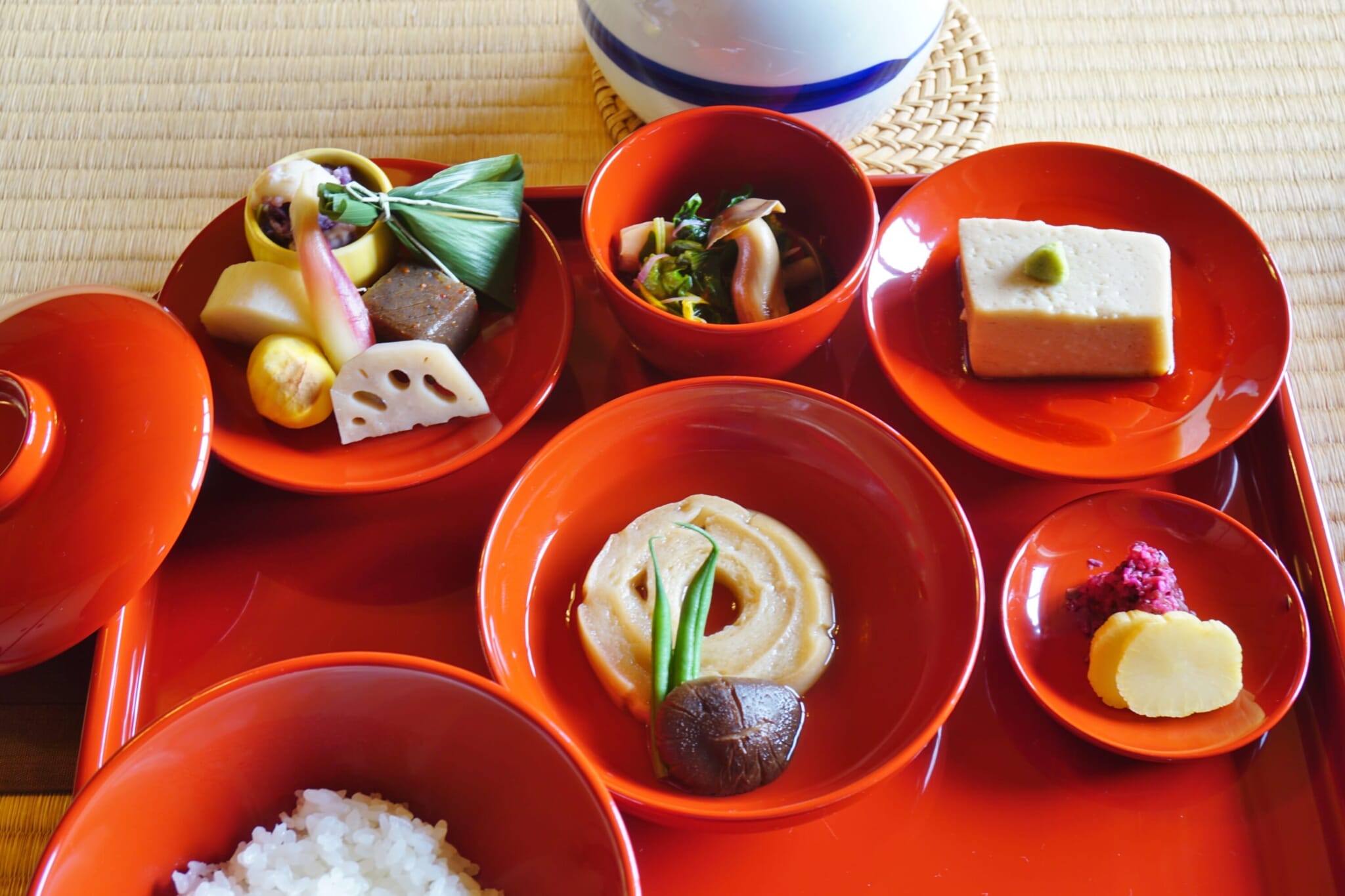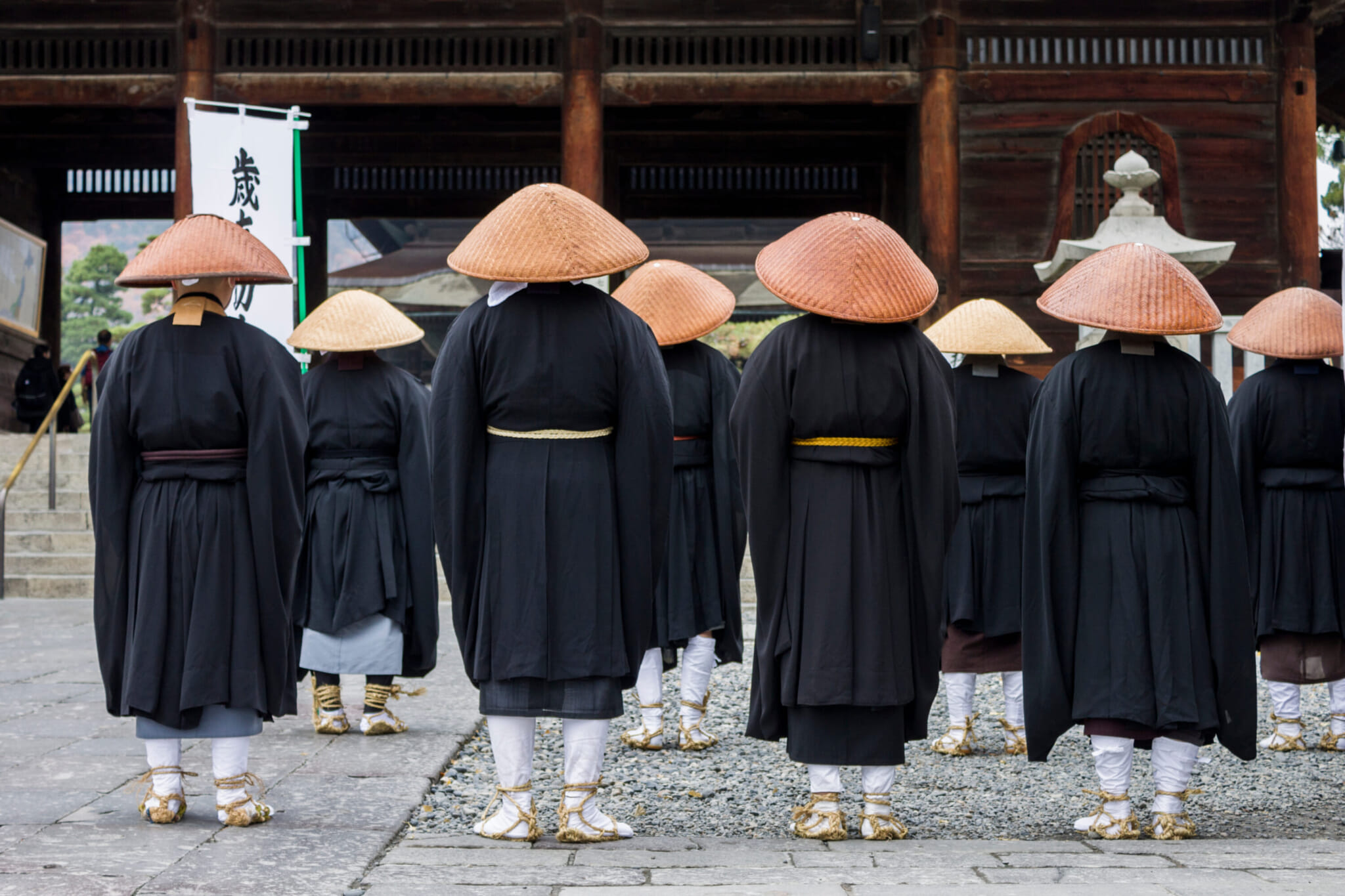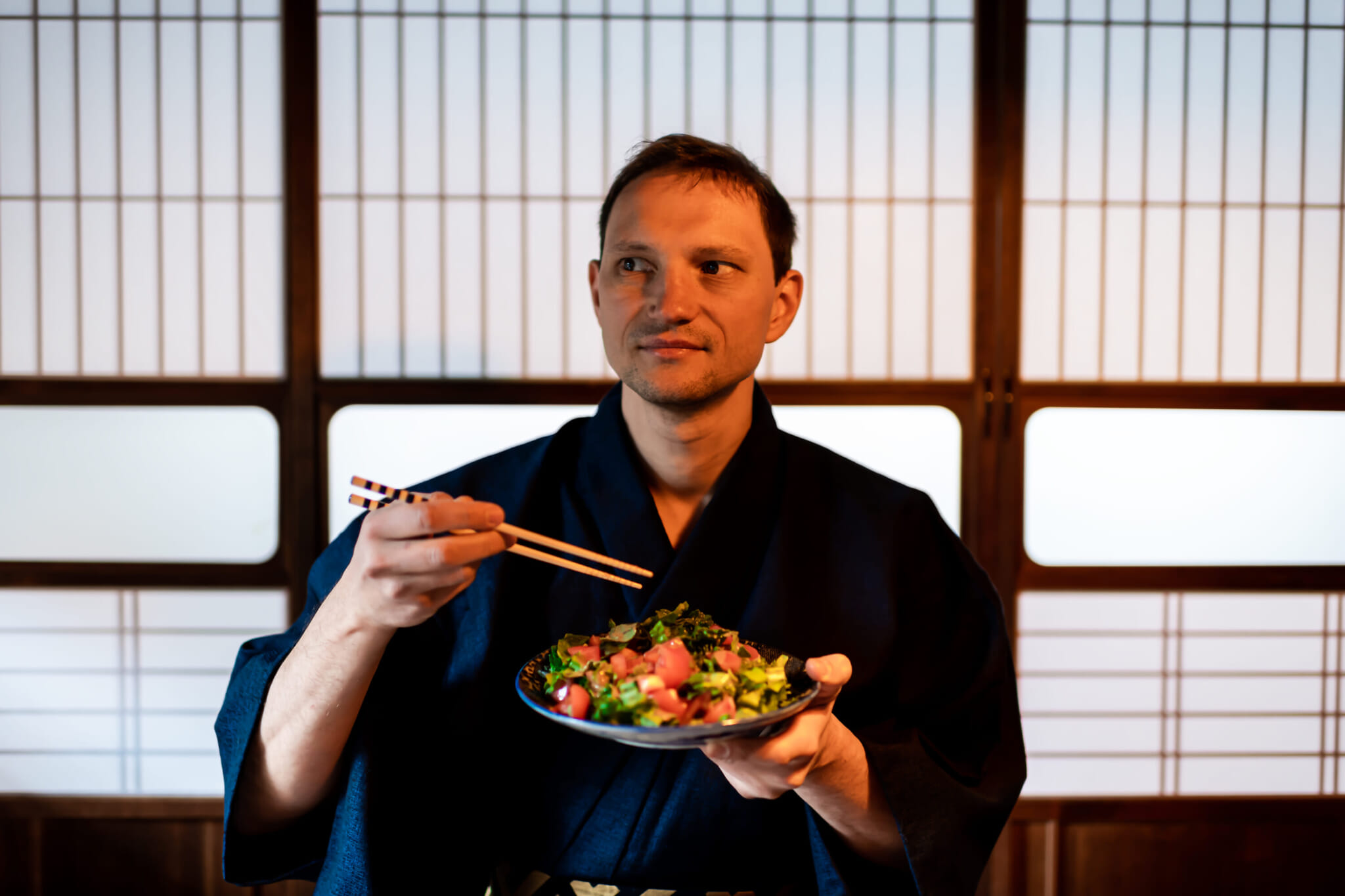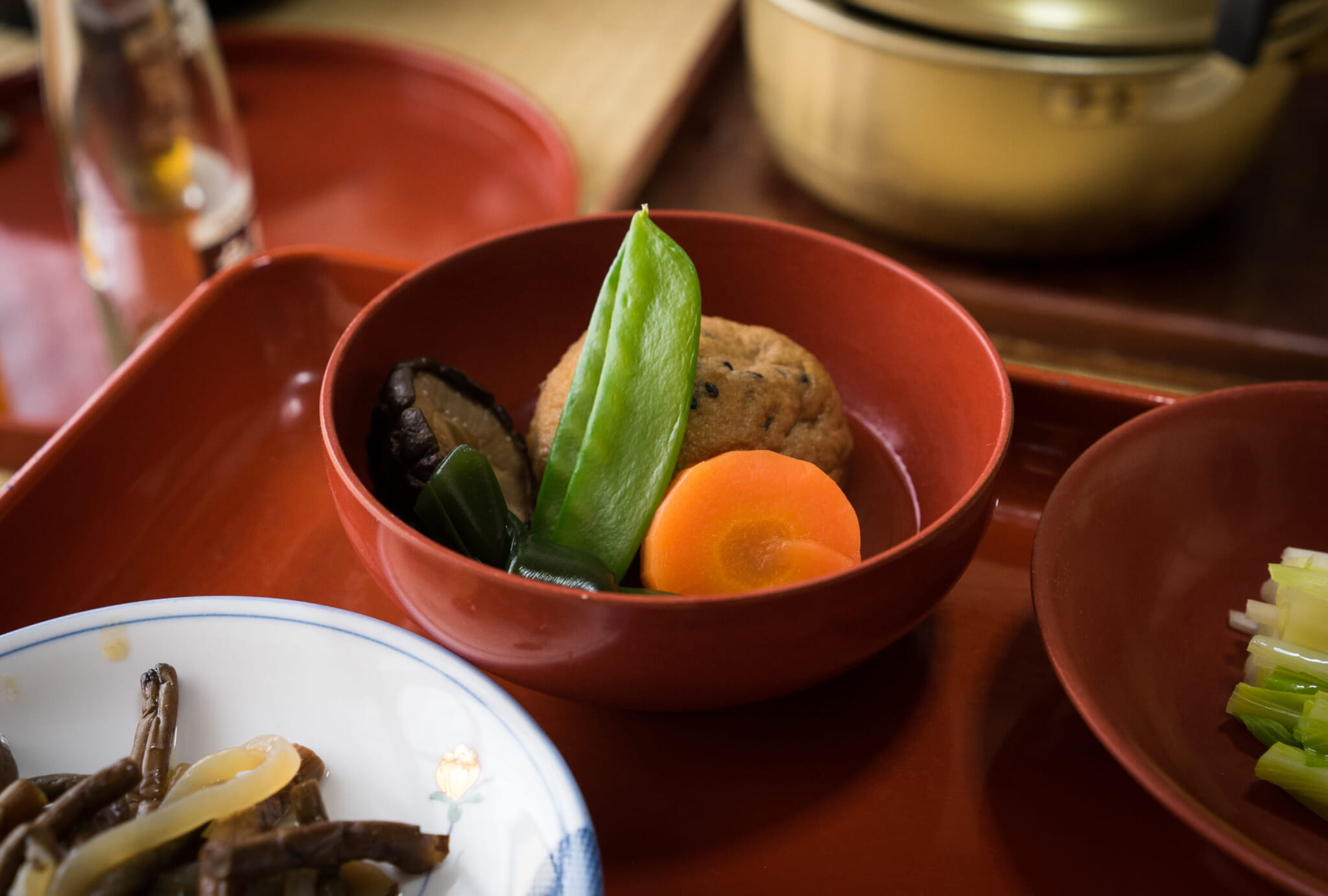It’s a well-known fact that pursuing a vegan diet in Japan is a big challenge. A less known fact is that Japan actually has its very own traditional vegan diet, stemming from Zen Buddhism. Buddhist cuisine, called shojin ryori, is usually eaten by monks during their training. It follows the principle that anything that has the ability to run away when chased shouldn’t be consumed.
Whether you’re trying to find new vegan diets in Japan, interested in Buddhist traditions or just want to try out a great vegetarian restaurant, read on. We also sat down with Genyu Izawa from Gokokuji Temple, who spoke to us about the three different schools of thought associated with this cuisine.

A traditional spread for the vegan diet of a monk, known as shojin ryori
What is Shojin Ryori Exactly?
As a religious diet, shojin ryori is a little different from the trendy West Coast vegan diet. “People who practice Western vegetarianism think a lot about health, and often avoid plain, granulated sugar,” says Izawa. “White sugar is used abundantly in shojin ryori, which might be off-putting for Western vegans.”
Whereas modern vegan diets place an emphasis on health, animal protection and environmental consciousness, shojin ryori was developed to aid monks during their training and meditative processes. Because of this, as well as having no animal products, it also avoids any ingredients that can overstimulate the senses and disrupt meditation, such as energy-boosting root vegetables like garlic or onions.
Shojin ryori was introduced to Japan by the Zen Buddhist monk Dogen and popularized in the 13th century. Eaten during a monk’s training, it is often a very simple meal comprising only a bowl of porridge and some pickles. Monks have a complex system of prayers and chants to conduct throughout the meal to honor the food. Temples often house esteemed guests, however, and for them, an opulent kaiseki (multi-course) meal is served. These meals are colorful and elaborate, stimulating all five flavors (sweet, salty, sour, bitter and umami) by using ingredients such as vegan dashi and seasonal vegetables.

The Three Schools of Thought
Shojin ryori is largely broken into three schools of thought, or ryuha: Rinzai-shu, Soto-shu and Oubaku-shu. Each of these ryuha have their own branches of shojin ryori, with their own rules and preparation styles. Oubaku-shu, for instance, has a style called fucha ryori. Falling under the larger umbrella of shojin ryori, fucha ryori is entirely vegetarian, but uses a lot of Chinese spices for flavoring. The zazen meditations conducted before eating are different for each ryuha. Izawa explains that “in Soto-shu, monks stare at a wall and make their minds blank during prayer, whereas in Rinzai-shu, the teacher will give a topic to think about as the training monks enter a deep meditative state.”
Differences in each ryuha are also visible in the type of silverware used while eating. In Soto-shu, the cuisine is eaten with a long spoon, whereas in Rinzai-shu, a special chopstick called unsuibashi is used. Unsui, which translates literally to “cloud water,” refers to monks in training. They wander without constraints like flowing water or free-floating clouds. “If you see a monk in the customary navy kimono, an unsui’s obi and the ajirogasa straw hat, you’ll know he’s one of the monks in training that prepare shojin ryori,” Izawa says.
Shojin ryori is served on a set of nested bowls, but each school of thought has a different word for them. In Soto-shu, the plates are called oryoki (応量器) which translates to a vessel that holds just enough, whereas Rinzai-shu and Oubaku-shu refers to them as jihatsu, but with a different kanji character (持鉢, or holding bowl, and 自鉢, or self-bowl, respectively).

Where to Try it for Yourself
There are many options if you’re looking to try shojin ryori. For a truly authentic experience, you can find a shukubo, or a temple lodging, where you can stay overnight at a Buddhist temple. During these overnight experiences, guests are usually guided through prayer ceremonies.
There are also many modern shojin ryori restaurants within the city, in which the food is served in the luxurious kaiseki style. For an elaborate Rinzai-shu-style meal, stop by Sankouin. It only serves lunch at noon each day, and its courses are served to guests who sit in front of a bamboo forest. There are different sentiments or Buddhist teachings behind each dish, and customers can experience Rinzai-shu’s teachings through gastronomy.
Oubaku-shu-style fucha ryori can be tried at Bon, which uses more Chinese seasonings than other shojin ryori establishments. Each table of the restaurant has a separate room for a truly luxurious experience and each item on the plate is intricately thought-through and constructed. Bon’s “eel” is made from soy meat, which uses seaweed to imitate the skin and burdock root fibers to emulate the tiny bones.
Another option is Daigo, a shojin ryori restaurant near Tokyo Tower. It boasts an impressive two Michelin stars. Surrounded by a Japanese garden, enjoy a calm, meditative experience while indulging in seasonal ingredients and the famous nameko mushroom porridge.
If you’d like to get even more hands-on, you can attend a shojin ryori cooking class.









